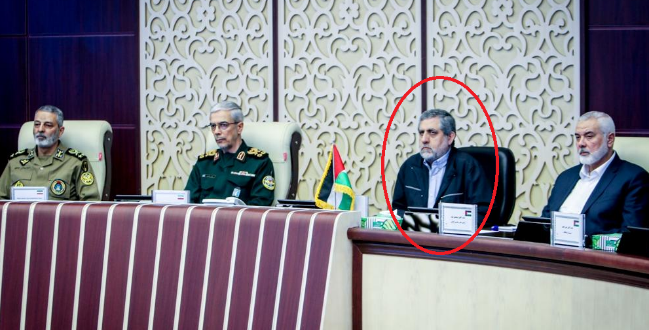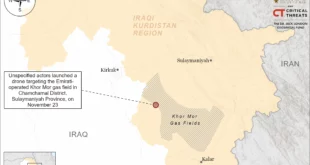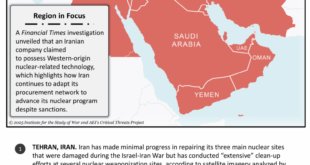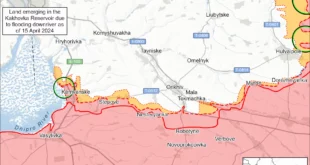Izadi (circled) in a meeting with a Hamas delegation during a visit to Tehran. At the right is the late Isma’il Haniyeh, at the time head of Hamas’ political bureau, and second from the left is Mohammad Bagheri, chief of staff of the Iranian armed forces (DefaPress, March 30, 2024)
Overview
Saeed Izadi, aka Hajj Ramadan, heads the Iranian Revolutionary Guards Corps’ (IRGC) Qods Force Palestine Branch, which is responsible for liaising with Palestinian terrorist organizations, primarily Hamas and the Palestinian Islamic Jihad (PIJ), to attack Israel.[1] Izadi led Iranian efforts to smuggle weapons, provide funding and conduct training for Palestinian terrorist organizations in Judea, Samaria and the Gaza Strip; to strengthen cooperation and coordination between the Palestinian organizations and Hezbollah; and to coordinate relations between Hamas and the former Assad regime in Syria.
Hamas documents seized by the IDF during the Gaza Strip War exposed Izadi’s critical role in building the “resistance axis”[2] in accordance with the plans of former Qods Force commander Qassem Soleimani, under Iranian leadership and in partnership with Hezbollah, Hamas and the Palestinian Islamic Jihad (PIJ).[3]
The documents showed how over the years Izadi became a key figure in orchestrating Hamas decisions, influenced its leaders and was involved in strategic moves leading up to the October 7, 2023 attack and massacre.
The documents reveal the problems which arose over the years in connecting the partners and building the axis, as well as how Izadi met the challenges. That led to power struggles between those in Hamas who wanted closer ties with Iran and those, led by Khaled Mashal, who opposed Iran’s growing influence.
In ITIC assessment Izadi will continue to be a central figure in Iran’s efforts to rebuild the “resistance axis,” particularly Hamas and Hezbollah, following the war against Israel and the overthrow of the Assad regime in Syria. In all probability Izadi and the Palestine Branch will focus on smuggling weapons into Judea and Samaria and providing funding. They will also focus on attacks inside Israel, including attempts to assassinate senior Israeli figures in revenge for the damage to “resistance axis” organizations and the Israeli strike on Iran in October 2024.Izadi’s Involvement in Preparing the October 7, 2023 Attack and Massacre
Saeed Izadi played an important role in coordinating “resistance axis” elements in preparation for the October 7, 2023 terrorist attack and massacre. Following the conclusion of Operation Sword of Jerusalem (Operation Guardian of the Walls, May 2021), the axis partners began preparing for the “great campaign” which would bring about Israel’s defeat. Operation Sword of Jerusalem was regarded by the “resistance axis” as an unprecedented achievement, particularly in their view of axis capabilities to defeat Israel.In a letter sent from Gaza by the leadership of Hamas’ military wing to an unnamed senior Hamas movement figure who is referred to only as “the dear mujahid brother commander” [possibly Yahya al-Sinwar or Muhammad Deif], they praised the “victory” and expressed gratitude for the support of the “resistance axis,” particularly Iran and the IRGC. They also recommended strengthening cooperation with the IRGC in preparation for future fighting.Operation Sword of Jerusalem marked a turning point in the conflict between us and the thieving Jews. The campaign is a stage in the humiliation and disgrace of the sons of Zion at the hands of its mujahideen servants, so that we may move to the phase of eliminating the entity and erasing its existence. That requires investment in the achievements and gains of Sword of Jerusalem and integrating efforts with all friendly elements [sic] whose appetite and desire to remove the entity have been whetted, in order to advance toward practical steps which will contribute to accelerating the disappearance of the entity and enable us to manage the battle for liberation [sic] and coordinate with them in leading the legions of liberation from the surrounding countries.
In evaluating our cooperation with our brothers in the Revolutionary Guards, it has become clear to us that there is a need to enhance the level of coordination with them by sending brothers with thorough knowledge of both the enemy’s and our allies’ capabilities, have the authority to make decisions and are capable of agreeing on unified strategies and organized steps to advance and activate all fronts against the Zionist enemy in any future campaign, fronts that the enemy will not be able to contend with simultaneously, especially if the Palestinians in the occupied interior and Judea and Samaria are activated, along with the Arab peoples in neighboring countries, particularly in Jordan and Lebanon.

Captured document 1. Letter from the military leadership after Operation Guardian of the Walls[4]
On May 31, 2021, Izadi sent a letter to Ismail Haniyeh, congratulating Hamas on the “great victory.” He also thanked Haniyeh for commending his [Izadi’s] role in a letter of gratitude Haniyeh had sent to Qods Force commander Esmail Qaani. Izadi noted that an additional $10 million had been allocated for the military wing and suggested holding a meeting with Haniyeh in Iran or Lebanon. In response, Haniyeh thanked Izadi and Qaani for their support of the “brothers in Palestine” to strengthen their resilience, weaponry and rocket launching capabilities, as well as for financial backing. He also stated they would certainly work to arrange a meeting in Iran and Lebanon “within days.”We want to inform you that an amount has been allocated to the brothers in the al-Qassam Brigades in addition to what was recently sent, with a value of (10 million). We hope to inform them of this, and we are in contact with them to arrange transportation. The leadership of the [Iranian Islamic] Republic also wants to support the families of the shaheeds in Gaza and assist homeowners whose houses were completely destroyed in the last war, support called “temporary shelter.” It will be provided through the Palestine Shaheeds’ Fund, and we will further inform you regarding the amount, the method and how it will be implemented.

Captured document 2. Letter from Izadi to Haniyeh, May 31, 2021[5]
On June 5, 2021, Yahya al-Sinwar, Muhammad Deif and Marwan Issa sent a letter to Saeed Izadi in which they praised the “divine victory,” praised Qassem Soleimani and expressed gratitude for Iran’s support and willingness to enter the campaign if required. The three urgently requested Iranian assistance in rebuilding their forces and begged for Saeed Izadi’s help in securing support from Iranian leader Ali Khamenei, and Qods Force commander Esmail Qaani, to destroy Israel. They also requested financial and material aid amounting to $500 million over two years, promising that the entire sum would be directed toward the campaign against Israel.Brother Commander Mujahed/al-Hajj Ramadan…
We all fully rely on you to support our request to His Eminence, the Leader and Guide / Ali Khamenei, and Brother Leader Mujahed / Esmail Qaani, and to double your contribution in the campaign for the liberation and removal of the monstrous entity called Israel.

Captured document 3. Letter from al-Sinwar, Deif and Issa to Izadi[6]
On September 22, 2021, a meeting was held of the Hamas leadership and senior Qods Force officials, led by Qaani and organized by Saeed Izadi, who attended with his top aides. The objective of the meeting was to learn from Operation Sword of Jerusalem and formulate strategy continuing the “struggle.” Sword of Jerusalem was described as a highly successful operation which embarrassed and confused the “enemy.” Its objective was to undermine normalization between Israel and the Gulf States while increasing international awareness of the Palestinian issue. The Hamas leadership reported to the Iranians that Israeli strikes on the movement were minimal, including only limited damage to Hamas’ “metro” [the tunnel system in the Gaza Strip], offensive tunnels and the movement’s nerve centers. The impressive intelligence coordination between Hamas and Iran before and during the fighting was also noted. The meeting ended with a decision to prepare for the next major campaign against Israel.Hajj Esmail:
– This is an important stage in the history of the nation, and victory will only be achieved through sincerity.
– This campaign had tremendous global repercussions, and it is only natural that you will benefit from it.
– A turning point in the history of Palestine, what was before Operation Sword of Jerusalem will not be the same after it. You certainly have a plan for this.
– Hope rises in the [Muslim] nations and among the Palestinian people, while the enemy’s frustration increases. The psychological consequences are deeper than the physical ones.
– The most important outcome of any war is the imposition of will, and you achieved that in this war.
– This campaign is an enormous asset for the resistance.
– The enemy has lost stability even within the ‘48 territories.
– With Allah’s help, the long-term consequences of this victory will become evident.

Captured document 4. Summary of the meeting held by the Hamas leadership and senior Qods Force operatives, September 22, 2021[7]
On July 1, 2022, Ismail Haniyeh reported to Yahya al-Sinwar about another meeting organized by Saeed Izadi in Iran and about a secret meeting he arranged with [the late] Hezbollah secretary general Hassan Nasrallah, during which the strategy for the major campaign against Israel was chosen. Three scenarios prepared by the Hamas leadership in the Gaza Strip were examined: a large-scale strategic campaign against Israel, in which all elements of the “resistance axis” except for Iran would enter the war to topple the “occupation;” an intermediate campaign involving some “resistance axis” partners, Hamas and Hezbollah, to humiliate the “enemy,” undermine its motivation to fight and topple the Palestinian Authority; or alternatively, to activate Hamas alone in the Gaza Strip, Judea and Samaria.
Haniyeh reported that Nasrallah agreed with the scenario of Israel’s destruction and that Saeed Izadi supported the proposal but requested a thorough examination of the plans. According to Haniyeh, Nasrallah believed that the data and circumstances confirmed it was a realistic and achievable scenario, meaning the end of Israel’s existence.First: the strategic course of the conflict
We presented our vision regarding the course [of the conflict] and explained that we had studied the issue in our internal circles in the Gaza Strip, Judea and Samaria. As for our brothers abroad, they are conducting a general study of the current state of the conflict with the enemy but have not yet been informed about the scenarios and the vision. We presented them with the first and second scenarios mentioned in your letter and did not relate to the third. After an in-depth and lengthy dialogue, during which His Eminence al-Sayyid [Nasrallah] clearly and resolutely expressed his position, he stated that he supported the first scenario and believed that the available information and circumstances confirmed that it was realistic and could be achieved, meaning the end of Israel’s existence. Hajj Ramadan [Saeed Izadi] generally supported that but noted the need to study the possibilities and understand the obstacles and challenges before proceeding with the matter.

Captured document 5A. Letter from Haniyeh to al-Sinwar, July 1, 2022[8]
It was agreed that the matter would be brought to Iran’s leader for decision; financial assistance to Hamas was approved. All parties were asked to develop an integrated plan relating to “axis” strengths and weaknesses, the means, roles, arenas and parties which would participate in the campaign. It was further agreed that Jerusalem and al-Aqsa would be the banner of the battle and that the battle had to begin from within.We thank Allah for the events during our visit to Lebanon, a milestone in which the movement strengthened its leadership in the Palestinian project, its strategic alliances, its openness and its political legitimacy [sic]. The brothers in the leadership and the people on the ground did everything required of them to make the visit a success both at the movement and national levels. The brothers in Hezbollah and Hajj Ramadan [Saeed Izadi] ensured that the visit proceeded as planned in terms of the state, security and the resistance project, as well as in discussions regarding future directions related to the conflict and relations with Syria.

Captured document 5B. Letter from Haniyeh to al-Sinwar, July 1, 2022[9]
Izadi’s Influence on Hamas’ Decisions
Over the past decade Izadi firmly established his influence over the “resistance axis” organizations for which he was responsible, with his activities and influence covering various fields, including Hamas’s propaganda and media campaign. His status can be seen in his closeness to Khamenei, his ability to organize meetings between Hamas and Hezbollah leadership with Qods Force commander Qaani, and, most notably, his influence over Hamas’s decision-making through manipulation, a policy of divide and conquer and control over Hamas’ funding and arms transfers.
The documents seized in the Gaza Strip provide evidence of the transformation undergone by Hamas leadership in Gaza and parts of the leadership “abroad,” from an organization influenced by the Muslim Brotherhood to one influenced by Iran. From Iranian perspective, over the past decade Hamas has become the dominant Palestinian “resistance” organization, more important than the PIJ.
The earliest document in ITIC possession documenting Izadi’s involvement with Hamas is dated December 24, 2016, a period of extreme sensitivity in Iran-Hamas relations because of disagreements over the Syrian Civil War and Saudi Arabia’s offensive against the Houthis in Yemen. According to the document, the Iranians were making every effort to increase their influence over Hamas, primarily through financial leverage, but internal problems in Iran prevented the funds from being transferred to Hamas, resulting in considerable dissatisfaction in Hamas. In a document sent by Izadi to [the late] Muhammed Deif, the commander of Hamas’ military wing, Izadi apologized for the delay in transferring funds and urged Hamas not to view it as a crisis but rather as a result of Iran’s budgetary issues. Izadi promised to inform Mashal of any change in Iranian policy but reiterated that Iran remained committed to transferring funds to Hamas.My dear brother,
I wish to inform you that the delay in sending you the money was solely due to a lack of budget and [financial] liquidity in the Islamic Republic of Iran. Therefore, I send you this message to keep matters from being misunderstood by your brothers and mistakenly attributed to unreasonable or unfounded issues and violations. If the day comes when a decision is made to halt the assistance and sever ties, I will inform you directly with full transparency and without hesitation.

Document 6. Letter from Izadi to Deif, December 24, 2016[10]
About six months later, the tone in the correspondence between Hamas and Izadi had already changed, and his senior status was clearly recognized. In a series of exchanges in June 2017, when tensions were still high between Hamas and Hezbollah because Hamas supported for the rebels against Syrian President Assad, Haniyeh and al-Sinwar approached Izadi with requests to allow senior Hamas figures Saleh al-‘Arouri and Zaher Jabarin to settle in Lebanon. Izadi confirmed that he had handled the matter and had also received Nasrallah’s approval, who assured him that Hezbollah would treat both of them as “brothers.”My dear brother, I have received your esteemed letter, as well as the letter from our dear brother Abu Ibrahim Yahya al-Sinwar, and I have delivered it to His Eminence Hassan Nasrallah. He sends you his gratitude for the letter and answers, “We are ready to receive your brothers and will keep them before our eyes.” His Eminence will respond to your letter as soon as possible, with the help of Allah. We have fulfilled our duty, and the brothers are our guests, with care and trust.
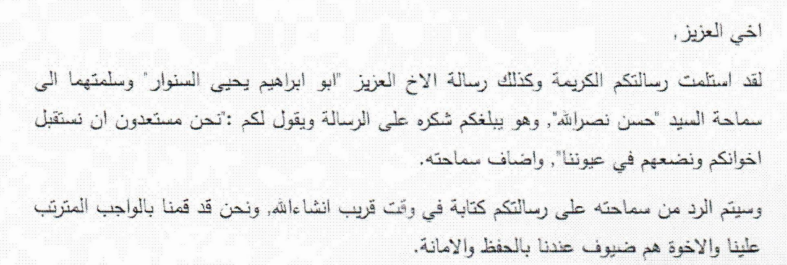
Document 7. Letter from Izadi to Haniyeh, June 9, 2017[11]
Izadi’s considerable influence in Hamas’ decision-making was most evident after the operation. On May 31, 2021, he sent a document to al-Sinwar that included personal congratulations from Khamenei on Hamas’ victory in the campaign. At the same time, he expressed concern over developments inside the movement, particularly regarding the opposition of people who did not believe it would be possible to be “fully liberated” from the “Israeli occupation.” He said they were enemies who begged for negotiations with the United States while the way to change the situation was not negotiations but the continuation of the campaign. Izadi effectively instructed al-Sinwar that action had be taken not only with weapons or financial resources but also by means of a media and “education” campaign, as he had discerned a significant flaw which required cooperation to correct. To do so he proposed a media and propaganda plan for implementation within Hamas.I remember one time when I spoke with the shaheed leader Hajj “Qassem” and heard him say that resistance was at risk in two instances: the first was in the event of defeat and collapse, and the second in the event of victory. Some people cannot bear a loss in battle, despair seeps in and they believe there is no hope or purpose and are led to surrender. On the other hand, in victory some people believe they have reached the pinnacle and feel compelled to trade on the victory. In both cases, there is a danger of deviating from the true path. But we are confident because of the presence of people like you, our dear brother Abu Khaled al-Deif, our dear brother Abu al-Abed Haniyeh and the rest of the leaders, mujahideen and great fighters. The shaheed leader told you in the past that “you came from the pits of fire,” and with your presence, there is no fear for the resistance. However, for the sake of vigilance, the situation requires attention to obsessive individuals, and Allah is the one who aids us.

Document 8. Letter from Izadi to al-Sinwar, May 31, 2021[12]
Izadi worked actively to dismantle Hamas internal opposition and to remove from decision-making positions those he perceived as opposing the subjugation of the movement to Iranian control, primarily Khaled Mashal. Izadi effectively forced al-Sinwar to sideline Mashal from strategic activities. In a letter dated July 12, 2021, Izadi informed al-Sinwar that he had raised the issue of Mashal in a conversation with Haniyeh. According to Izadi, Brother Abu al-Walid [Mashal] bore responsibility for the failures and numerous problems that had occurred within the “resistance axis” and had, in effect, chosen a side, creating a significant problem for the “resistance,” Hamas and Iran. Izadi stated that he had done everything possible to reconcile with Mashal and had met with him several times but to no avail. Izadi also praised Haniyeh for not hesitating to exclude Mashal from the Hamas delegation that attended meetings in Lebanon. He made it clear that the Iranians would not accept Mashal as in charge of force-building in Lebanon, and therefore he requested that the force in Lebanon be led by the internal leadership. Additionally, he requested that the issue be handled by al-Sinwar and Deif, not just by Haniyeh.Unfortunately, Brother Abu al-Walid [Mashal] and his misguided policy bear responsibility for many failures and problems that have occurred within the resistance axis because he did not fulfill his role and did not leverage his leadership and influential position among various regional actors. On the contrary, in practice, he chose a side and created a significant problem for the resistance, for Hamas and also for us as allies, supporters, facilitators and loyal partners. However, that is natural, and in order to address problems within the Islamic nation and within the Islamic home, there must be an atmosphere of tolerance. To overcome the problems, eliminate disagreements and resolve the disputes which have significantly harmed the resistance axis, it is our duty to approach him and extend him our hand.

Document 9. Letter from Izadi to al-Sinwar, July 21, 2021[13]
In two letters to Muhammad Deif, Izadi reprimanded him and the movement’s leaders over issues of secrecy. In a document dated July 16, 2023, which dealt with a highly sensitive matter, Izadi was enraged that they were sharing secrets with Zaher Jabarin, whom he described as someone who “does not know how to keep his mouth shut.” Izadi demanded that sensitive matters remain strictly between him and Deif. In a letter dated July 19, 2023, Izadi again noted that he had received a request from Haniyeh “on the sensitive matter” and once again reprimanded Deif for the involvement of too many people within Hamas.In response to the letter I sent you a short time ago, I received a letter from our dear brother Hajj Abu al-Abed Haniyeh and stamped with the movement’s seal, through Sheikh Saleh, regarding the same matter. This is what I meant when I referred to handling a highly sensitive issue. This approach is certainly not suitable for us and this letter is enough for whoever printed it, whoever sent it, and for someone else to speak while the discussion among the brothers expands to a broader circle. Not to mention that Brother Abu al-Abed added Brother Abu Hamdan to Brother Abu Islam, who had requested to be present in the discussion on this matter. Is it normal for such a sensitive issue to be brought up for discussion in this manner?

Document 10. Letter from Izadi to Deif, July 19, 2023[14]
Izadi’s influence on Hamas’ decisions is also reflected in his absolute control over Hamas’ funding, as revealed in documents from the Gaza Strip. On July 2022, Ismail Haniyeh wrote to Yahya al-Sinwar describing his meeting with Saeed Izadi and recounting the movement’s financial needs. Izadi listed for Haniyeh all the amounts he had transferred to the movement, their allocation and his planned funding for the coming months.Secondly / the financial situation:
We had a long conversation with Hajj Ramadan [Saeed Izadi] and also a meeting with His Eminence Hassan, where we explained our financial situation and our needs in light of the threats and what we aspire to in the future campaign against the enemy. In a secret meeting between me and Hajj Ramadan, he told me what he sent you since the beginning of the year, as well as what he has spent on the West Bank and his commitment to allocate a fixed amount every month for the West Bank for armament over the next six months. He also covered the projects they are presenting. During the visit, I received $5 million from him in addition to the $5 million sent to the al-Qassam Brigades which recently arrived. We will follow up on the matter, with the help of Allah.

Document 5C. Letter from Haniyeh to al-Sinwar, July 1, 2022[15]
On September 24, 2022, Haniyeh briefed al-Sinwar on Hamas’ financial situation and on a partial halt in funds from Iran. Apparently there was a direct link between the hiatus in the receipt of funds and the activities of Khaled Mashal, as Haniyeh asked al-Sinwar to “handle” Mashal’s conduct. Haniyeh also asked al-Sinwar to use the funds he received directly from Saeed Izadi for the benefit of the Izz al-Din al-Qassam Brigades’ operations. In a document, dated June 8, 2022, Izadi confirmed to Haniyeh that a sum of $5 million would be transferred but demanded that he specify who would be receiving the money.Our congratulations to you and to all the mujahideen brothers. Based on your previous letters and the verbal message through our dear brother Abu Osama, I have informed him that a sum of $5 million is ready to be delivered to you. We hope you will inform us to whom we should transfer it, along with the usual required information.

Document 11. Letter from Izadi to Haniyeh, June 8, 2022[16]
Building Hamas Capabilities in Lebanon and Coordination with Hezbollah
One of Izadi’s important activities was building Hamas’ capabilities in Lebanon and fostering cooperation with Hezbollah and the PIJ while mobilizing Sunni forces from Lebanon. Hamas established a social structure within the refugee camps in Lebanon and, unlike Fatah, successfully exerted control over the Palestinian population in the camps and resolved blood feuds. Nasrallah expressed support for Hamas, but as its armed operatives began to appear in the camps and it became evident that the movement was also using the sites to store ammunition, Hezbollah started to fear a loss of control.[17]
To improve the capabilities of the “resistance axis” Saeed Izadi sought to coordinate Hamas’ activities in Lebanon. He viewed Hamas-Hezbollah cooperation as a strategic issue and wanted to set clear boundaries, improve coordination and be directly involved in building Hamas’ capabilities in Lebanon.
Captured correspondence from the Gaza Strip revealed significant disagreements over the years regarding Hamas’ activities in Lebanon. One example was an exchange between Khaled Mashal and Abu al-Baraa [Marwan Issa, deputy head of the military wing] on May 22, 2022, in which Mashal described a visit to Iran during which he had met with Saeed Izadi’s deputy. Mashal recounted that they discussed Izadi’s conversations with Nasrallah regarding the Hamas project in Lebanon, as well as with Hajj Abdul Qadir, who, according to the document, was supposed to oversee Hamas activities in Lebanon. Later, Mashal met with Saeed Izadi in Lebanon, where they discussed the cooperation between Hamas and Hezbollah.
According to Mashal, Saeed Izadi told him that establishing a project for Palestinians in Lebanon was at the core of Iran’s philosophy of involving all nationalities, Lebanese, Iraqi and Yemeni, for the sake of the “liberation project” [the war against Israe]. However, he raised concerns based on past experience, which included the sectarian and political structure of Lebanon, which rejects such projects, the Palestinian historical footprint in Lebanon and its negative impression on Lebanese memory, as well as events in Syria and Hezbollah’s fears that Palestinian weapons might be directed against Hezbollah forces within Lebanon. Therefore, Izadi sought to address the concerns of all parties regarding Hamas by imposing a series of weapons restrictions on Hamas activities in Lebanon, as well as by determining who would command the Hamas forces in the country.Summary of the meeting with Hajj Ramadan [Saeed Izadi]:
- Establishing a project for the Palestinians in Lebanon is not just a decision but is, in fact, at the very core of our philosophy of involving all nationalities in the project for the liberation of Palestine (Lebanese, Iraqi, Yemeni, Afghan), and therefore, it is appropriate for us to contribute to the mobilization of the Palestinians.

Document 12A. Letter from Mashal to Issa, May 22, 2022[18]
Mashal wrote to Issa describing his conversation with Saeed Izadi. He said he had been impressed by Izadi’s determination to establish Hamas’ project in Lebanon. The project would initially consist of around 2,000 fighters, with the potential to expand if and when concerns and fears on the Lebanese side [i.e., Hezbollah] were overcome. Hamas, said Izadi, was to assist in any joint offensive operation carried out by Hezbollah.
Mashal also noted Izadi’s and Hezbollah’s concerns regarding Hamas’ presence in Lebanon. He stressed that Izadi was aware that Hamas had missiles and UAVs in Lebanon and feared their use in attacks against Israel without coordination. Izadi made it clear that to overcome their concerns it was necessary that command of the forces in Lebanon be under the Hamas leadership in the Gaza Strip, rather than the Hamas leadership “abroad,” evidence of Izadi’s attempt to maintain control over the leadership of Hamas’s military wing.
Mashal completely rejected Izadi’s position. He said that the meeting between them and Izadi’s associates had become heated. Mashal strongly opposed the idea that the Hamas leadership in the Gaza Strip would manage the forces in Lebanon and insisted that the leadership “abroad,” under his command, should be responsible for the project. Accordingly, Mashal concluded his letter to Issa with an ultimatum, saying, “You have two options, either accept Hajj Ramadan’s position, or we will continue with the project as we see fit without his agreement.” “I advise you not to listen to Hajj,” Mashal recommended, another indication of the disputes between Izadi and Mashal and their struggle over spheres of influence within Hamas.- Regarding the mission, he said, “I said you were appointed as the project coordinator, meaning you are the liaison between me and the committee. I am saying this clearly: it is completely unacceptable. It is better for me to sit with them directly rather than with a mediator who pressures both me and them. I know them well and I know how to handle them. I do not want a coordinator. I want a leader who will manage the project on the ground and be responsible, and you can agree on an internal formula for your own relations.”
I told him that the idea of a leader from the front “abroad” was highly sensitive and might not be acceptable to the psychology of the people. He said, “This is the plan, and you must balance the importance of the project with the psychology of the people.” We discussed the point at length, and he told me, “Do not pressure me. It is clear that you are very prepared. I will not accept any formula that does not include that the person appointed is the leader of the entire project,” of course, within the framework of reference to the al-Qassam Brigades.
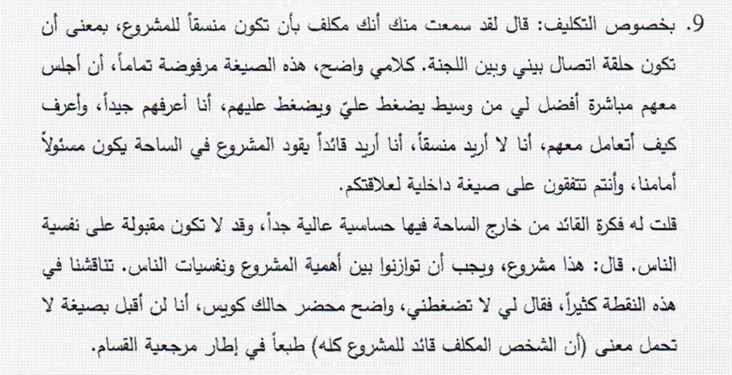
Document 12B. Letter from Mashal to Issa, May 22, 2022[19]
In September 2022, Mashal described another meeting with Izadi’s associates, during which he was directly accused of sabotaging the project in Lebanon. Mashal wrote that he had made it clear there should be a distinction between his personal position and that of Hamas. Izadi’s deputy urged Mashal to change his stance, given the project’s critical importance in Lebanon. He noted that Hamas’ involvement would significantly increase manpower for the mission, considering that there were Sunni villages in south Lebanon where Hezbollah had no foothold and only Hamas could operate. He also stated that the IRGC were relying on Hamas rather than on the PIJ.
Mashal then described another meeting with Izadi, during which he accused Izadi’s associates of spreading lies about him and attempting to blame him for the lack of progress in the Lebanon project. He reiterated that Hamas’ activities in Lebanon would be managed solely by Hamas, including decisions on the rules of engagement.In my last meeting with Hajj Ramadan, I told him, “I see that there is false information among your friends in the Guards and the Party [Hezbollah] claiming that I am the one disrupting the jihadist project.” He smiled at me and said, “I haven’t told them about the latest developments, nor on the details of your brothers abroad’s refusal. I am not concerned about presenting them with the details, so they are still stuck on the initial story that you are unwilling to manage the project.” So I asked him, “How far have you progressed in the project?” He said, “While we are conducting training to save time, try to convince your brothers of the project’s importance and feasibility. It is not necessary that those coming from Gaza stay permanently. Instead, this is a trial period of two years, for example, until everyone is certain about each other.”
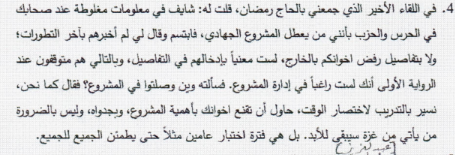
Document 13. Letter from Mashal to Issa, September 2022[20]
The Hamas-Syria Reconciliation
The issue of Hamas’ relations with Bashar al-Assad’s regime in Syria was another bone of contention that required Izadi’s involvement. Iran viewed the restoration of ties between Hamas and Syria as central to the construction of the “resistance axis.” Hamas’ relations with the Assad regime were effectively severed in 2011 after Mashal, who at the time headed the Hamas political bureau, criticized the Syrian regime and refused to condemn the protests against Assad at the onset of the Syrian Civil War. Hamas paid a heavy price for what was described as a “grave strategic mistake,” as Assad closed Hamas’ offices in Damascus, forcing the movement’s leaders to relocate their activities and headquarters to Qatar and Turkey.
In a series of letters with the Hamas leadership, Izadi worked hard to rehabilitate ties between the parties. In a letter dated June 8, 2022, between Haniyeh and Izadi, the latter described his efforts to persuade the Hamas leadership to renew relations with Syria. Izadi referred to meetings he held with senior Hamas figure Osama Hamdan and with Hassan Nasrallah, during which he stressed the need for extreme caution in statements and messages from Hamas leaders on the Syrian issue. Once again, a direct accusation was leveled at Mashal and his associates, who opposed reconciliation with Assad. Izadi claimed that there was evidence of Hamas operatives fighting alongside the rebels in the campaign against the Assad regime. Haniyeh responded by committing to doing everything possible to change Hamas’ relationship with Syria and to normalize relations. He also noted that they were aware of the prevailing sentiment among certain elements in the movement but gave his assurances that they would make great efforts to change the atmosphere.We met with our dear brother, the mujahid Abu Osama, as well as with His Eminence the Secretary General Hassan Nasrallah (may Allah protect him), and it was a good meeting, praise be to Allah. Things will become easier. We also explained to our dear brother Abu Osama what we and His Eminence have done with our Syrian brothers to regularize the relations, which significantly shortened the process and made things easier at alower cost for you.

Document 14A. Letter from Haniyeh to Izadi, June 8, 2022[21]
Considering what was stated in your esteemed letter, and since we are aware of the internal and external factors surrounding the relations, we will certainly make a tremendous effort to create the appropriate atmosphere for the decision. We must always consult and cooperate on this matter, and we appreciate the efforts made by His Eminence and by you with the Syrian state, as this has helped provide a positive and respectful atmosphere for these relations.

Document 14B. Letter from Haniyeh to Izadi, June 8, 2022[22]
Appendix 1 – Milestones in the Life of Saeed Izadi
Mohammad Saeed Izadi, aka Hajj Ramadan, was born in Iran in 1964. He holds a BA in electronic engineering from the Khajeh Nasir Toosi University of Technology in Tehran.
Izadi joined the Iranian Revolutionary Guards Corps (IRGC) in 1979 and held command positions during the war against Iran. He was commander of Kurdistan Province from 1982 to 1983, commander of Hamzeh Sayyid al-Shuhadaa Headquarters from 1983 to 1985, and commander of Najaf Ashraf Headquarters from 1985 to 1987.
He was deputy head of the operations division at the IRGC (1987–1989), commander of the IRGC ground forces (1989–1992), and deputy head of planning, programs, and budgets at the armed forces headquarters (1993–2006) (shaboneh, April 1, 2024).
Izadi’s activities within the Palestine Branch of the Qods Force began to surface after Operation Protective Edge (July–August 2014), when Iran accelerated the construction of the “resistance axis” and strengthened its ties with Hamas following years of tension over Hamas’ support for opponents of the Assad regime in Syria.[23] His first known involvement in direct military activity against Israel was in planning an attack by the PIJ branch in Syria, during which rockets were fired at northern Israel (Walla, August 23, 2015).In 2018, Israel’s ambassador to the UN, Danny Danon, sent a letter to the UN secretary general and the president of the Security Council, identifying Izadi as spearheading the drive to strengthen ties between Hamas and Hezbollah, which form the core of Iran’s “resistance axis.” Danon pointed to high-level meetings between Izadi and Saleh al-‘Arouri, deputy head of Hamas’ political bureau. A year later, the ambassador told the UN Security Council that with the help of al-‘Arouri and Saeed Izadi, Iran was attempting to turn Judea and Samaria into a fourth military front against Israel (Misgav Institute, June 20, 2024).
In September 2019, the United States Treasury Department imposed sanctions on Izadi and he became a “specially designated global terrorist” (SDGT) because on his support and funding for Hamas. According to the Treasury Department, at the end of 2016 Izadi instructed a senior Hamas figure to obtain approval from three movement leaders to receive money directly from him. The unidentified senior figure noted that Izadi would send $1 million in addition to the regular allocation, along with another million dollars designated for that figure (United States Treasury Department website, September 10, 2019). In December 2023 the UK also imposed sanctions on Izadi. According to the British Foreign Office, in addition to heading the Palestine Branch, Izadi also led the Abu Jihad external operations unit (UK Foreign Office website, December 14, 2023).
Following the attack attributed to Israel on an Iranian diplomatic compound in Damascus on April 1, 2024, in which Mohammad Reza Zahedi (Hassan Mahdavi), commander of the IRGC Qods Force in Syria and Lebanon, was killed, reports claimed that Izadi was also among the dead. However, Iranian sources issued a denial and stated that he was alive and well (SNN.IR, April 1, 2024).Appendix 2 – The Qods Force and Its “Palestine” Branch[24]
The Qods Force is an elite unit of Iran’s Revolutionary Guards Corps, established in 1990 to create an organized framework for operational and political activities to implement the concept of “exporting the revolution” beyond Iran’s borders. In practice, the Qods Force has become Iran’s long-reaching covert arm, operating outside its borders against various enemies and conducting warfare against the United States, Israel and pro-Western Arab states through proxies while ensuring that Iran’s involvement remains concealed or ambiguous. That serves to reinforce Iran’s regional position and advance its strategic objectives through terrorism and political subversion.
The Qods Force consists of headquarters divisions, specialized command centers and regional directorates responsible for specific geographic areas. It has prestige within Iran’s leadership, enjoys extensive resources and influences Tehran’s strategic security decision-making, particularly on sensitive foreign policy issues related to Iran’s activities in Iraq, Syria, Lebanon, Afghanistan and the Gaza Strip.
The Lebanese arena is considered the flagship Qods Force operation and serves as a “forward position” for advancing Iran’s campaign against Israel. The force operates in Lebanon through a regional command known as the Lebanon Corps (Corps 2000), which was designed to establish and strengthen a military power base in Lebanon capable of attacking Israel’s home front. From Iran’s perspective, the forces will operate in due course based on Iranian strategic considerations, primarily in the event of an Israeli strike on Iran’s nuclear facilities.
As part of Corps 2000, the Palestine Branch (Branch 2500), commanded by Saeed Izadi, operates under the Qods Force’s strategic framework, as developed under the late former commander Qassem Soleimani. The Palestine Branch leads the IRGC involvement in the Palestinian arena, encourages terrorist attacks on Israel and fundis operations. It has been involved in smuggling weapons to Judea, Samaria and the Gaza Strip, providing financial support, training, and technical-operational assistance, including the technology necessary to locally manufacture weapons.
In 2023, the Israel Security Agency (Shin Bet) prevented a plot orchestrated by Izadi involving the recruitment of two Palestinians, Huda Mahana and Hajj Mohammad Radwan (aka Mohammad Bashir), for terrorist missions in Judea and Samaria. The two smuggled weapons and recruited terrorist operatives with the assistance of criminal elements inside Israel, fully aware that their activities posed a security threat to Israel.
In April 2023, the Shin Bet exposed an attempt by operatives linked to the Palestine Branch and Hezbollah to recruit Palestinians from Judea and Samaria for terrorist activities. Two Palestinian detainees reported that after being contacted by Hezbollah-affiliated operatives, they agreed to smuggle weapons into Judea and Samaria and trade them with the assistance of criminal elements in Israel. They were also supposed to gather intelligence on IDF activities in the area and recruit operatives for terrorist activities (Shin Bet spokesperson, April 17, 2023).
An investigation by an Iranian opposition television station linked Izadi to a scheme for smuggling weapons from Iran to Hamas via Lebanon as part of increased coordination between Hamas and Hezbollah. According to the investigation, Muhammad Srour, a financial operative for Hamas and Hezbollah in Lebanon, facilitated the transfer of tens of millions of dollars annually from the Qods Force to Hamas’ military wing, with Hezbollah acting as an intermediary (Iran International, September 24, 2023).
The Palestine Branch is also directly involved in recruiting agents inside Israel for intelligence gathering and terrorist activities. In November 2024, two residents of the Druze village of Mas’ade in the Golan Heights were detained on suspicion of being recruited by the Palestine Branch for intelligence collection on IDF activities in the area. According to the announcement, the information was transferred to their handler, Hussam al-Salam Tawfiq Zidan, a journalist for Iran’s al-Alam TV who lived in Damascus and operated on behalf of the Palestine Branch (Shin Bet and Israel Police spokespersons, December 6, 2024). Eurasia Press & News
Eurasia Press & News
